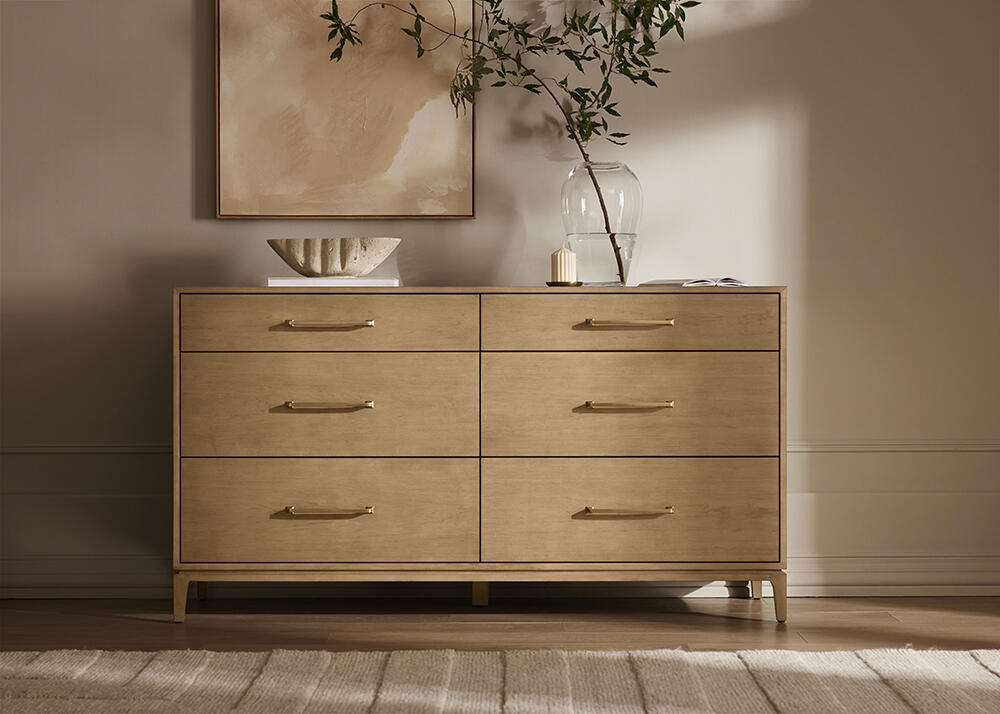What good is beautiful bedding if you can’t offer a beautiful bed to display it on? That question prompted Missy and Scott Tannen, the founders of direct-to-consumer bedding brand Boll & Branch, to enter the furniture category. The company, best known for its organic sheets, launched its debut collection of bedroom furniture last week—another step on the path to becoming an omnichannel retailer, adding to an assortment that already includes mattresses, rugs, candles and sleepwear.
“Furniture is something that we’ve been thinking about for as long as I can remember,” says CEO Scott Tannen, who launched the brand with his wife, Missy, in 2014. Upon opening a brick-and-mortar retail location in 2018, they created furniture for the space, where customers almost immediately started trying to buy floor models. “We aren’t changing our business model to become a furniture company by any means,” he says. “But we’re excited to be able to round out our vision for the bedroom and offer a complete Boll & Branch aesthetic. It’s a great opportunity to bring our ideas to life.”
The Tannens’ company sprang from a familiar entrepreneurial origin story—they couldn’t find what they wanted in the marketplace. Specifically, they were frustrated by the lack of organic, ethically made bedding on the market and how difficult it was to find out where products were made. They decided to create their own line that would tick those boxes. The business, which has grown steadily (including a recent push to double its physical retail footprint), is still privately held—something of a rarity these days in the DTC space. It now reportedly brings in more than $200 million a year.

Moving into the furniture category presented both opportunities and challenges for Missy, who serves as the brand’s chief designer. Designing case goods and bed frames comes with more complications than creating a duvet. But Missy, a former schoolteacher, has grown used to learning on the fly. “For the first five years that we were in business, I was our entire product development team,” she says. “Luckily, we had already been making our own furniture for the stores and for use in our brand photography, so I wasn’t completely starting from scratch. Some of the learning curve had already been addressed, but [we had to figure out] things like figuring out how to produce our own hardware or sourcing low-VOC stains. Oh, my goodness, the number of stains there are! It was hard, but also exciting to get to dream and think of our brand in a new way.”
To keep their offerings more curated, she created seven pieces: three bed frames—an upholstered frame, a wooden one and one that mixes upholstery and wooden details—in addition to a dresser, two nightstands and an upholstered bench. “I wanted it to feel classic and focused on shapes that feel timeless, like soft arches,” says Missy.
As ethical manufacturing has always been integral to the Boll & Branch brand, the Tannens visited a number of factories both stateside and abroad in order to find a partner they felt met their standards. “That’s the heart and soul of our brand, so we had to find a manufacturer that had the same beliefs and values that we do,” says Missy. They ultimately chose a vendor with operations in both the U.S. and Vietnam. “We want there to be an intentionality behind the craftsmanship, but we also need to know that they’re taking care of their workers, so we come in and do full audits regularly.”
Materiality was also a major factor in Missy’s design process—in all of the pieces, she opted for Oeko-Tex-certified upholstery fabrics that meet global recycled standards and low-VOC finishes. “We wanted to use the best materials for the customer and for the environment, as well as the people making it,” she says.
That the initial collection features only seven pieces with a limited number of finish options was a choice that made it possible for Boll & Branch to produce the product upfront instead of waiting for orders to be placed before manufacturing the line. “Consumers are used to seeing companies that offer a trillion different finishes and ‘customization’ options,” says Scott. “But what those companies have really done is created a floor model, and that’s why they give customers lead times of eight to 12 weeks. We went in the opposite direction. We’ve already taken a risk and invested in this line, and because of that, we can have it in the customer’s home in a matter of days.”
“We want to be known for exceptional customer service,” adds Missy. “Buying something from us should be as simple as seeing it, loving it, buying it and scheduling a delivery window.”





























